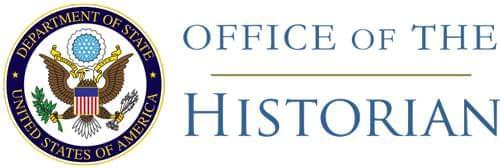401. Letter From the Acting Secretary of Defense (Robertson) to the President1
Dear Mr. President: A United States Delegation is currently negotiating with representatives of the Philippine Government for additional land urgently needed to expand certain United States military bases in the Philippines. These negotiations are based on the statement of principles issued jointly by Vice President Nixon and President Magsaysay on July 4, 1956, in which it was agreed that the Philippine Government would contribute the agreed land areas and the United States would release to the Philippine Government those base areas agreed to be no longer required by U.S. military forces in the Philippines. The United States in addition expressly reaffirmed Philippine sovereignty over the base areas and agreed to turn over to the Philippines all title documents and title claims to all areas which we presently hold as bases, it being understood that this would not affect U.S. use rights under the 1947 bases agreements.
Philippine negotiators have now made a strong plea that the Philippine flag be flown over U.S. bases along with the U.S. flag in an effort to meet extreme Philippine sensitivity regarding retention of their sovereignty over the U.S. bases. They have assured us at the same time that flying the Philippine flag would be purely symbolic and would in no way interfere with U.S. operations or with U.S. freedom to use the bases as required for military purposes.
The United States negotiating team has strongly urged that we acquiesce in the Philippine request regarding their flag.2 Under the arrangement proposed U.S. personnel would be responsible for raising and lowering the Philippine flag under the same conditions as the U.S. flag thus eliminating any necessity for stationing Philippine personnel on the bases. Our representatives have further pointed out [Page 666] that agreement by the United States would greatly assist in reaching agreement with the Philippine Government and would aid President Magsaysay in countering his political opponents who have charged that U.S. bases in the Philippines endanger Philippine sovereignty.
There are, nevertheless, significant disadvantages to U.S. acquiescence in flying the Philippine flag. Whereas President Magsaysay has popular support in the Philippines, flying their flag over U.S. bases might lead to later demands for actual Philippine control or participation in the operation of the bases, should President Magsaysay or his successors not be able to withstand political pressures. It may also lead to future Philippine demands for joint command of the base areas and the U.S. forces stationed there.
Also of importance are the implications with respect to the policy of flying flags of host nations in other countries where the United States has bases. We can anticipate a request from the Canadian Government that their flag be flown over U.S. leased bases in Newfoundland and similar demands from other nations such as Cuba, Panama and the British Caribbean territories, where the U.S. flag alone is flown over our exclusive use bases. However, at the request of certain nations we already fly the flag of the host country on certain other bases used exclusively by the United States. This is the situation, for example, with Army and Air Force installations in France, Greenland, Italy, Morocco and Saudi Arabia. The flag of the host country is also flown over bases used jointly with the host government in Canada, Taiwan, France, Greece, Iceland, italy, Japan, Korea, Morocco, the Azores, Spain, and the United Kingdom.
This matter has been discussed with representatives of the Department of State who, after considering the advantages and disadvantages, recommend that the United States agree to the Philippine proposal that their flag be flown over U.S. bases.
The Department of Defense is also prepared to accept the recommendation of the U.S. negotiators in this matter, on the understanding, to be confirmed publicly, that the flying of the Philippine flag is symbolic only, with no relation to the command and control arrangements already set forth in the 1947 bases agreement. We would also expect to take similar action to fly the Canadian flag over U.S. leased bases in Newfoundland if we are formally requested to do so. Future requests, if made formally by other governments, would be treated on a case-by-case basis after review with the Department of State.
In view of the implications of this matter, particularly as it could affect U.S. operations on bases throughout the world, we have considered it desirable to bring this matter to your attention and obtain your concurrence before taking final action in the Philippine negotiations. I recommend that if it is convenient for you to do so prior to [Page 667] your departure from Washington, Admiral Radford and I discuss the problem with you.3
With great regard, I am
Faithfully yours,
- Source: Department of State, Central Files, 711.56398/8–2156. Confidential.↩
- In telegram 448 from Manila, August 18, Ambassador Nufer commented: “In my view the flying of the two flags will have no effect upon basic principle that U.S. shall maintain effective control of bases. On other hand, agreeing to fly two flags will greatly enhance our negotiating position.” (Ibid., 711.56398/8–1856)↩
- An attached memorandum that specified current policy regarding the flying of the host country flag in 24 different nations with U.S. military installations is not printed.↩
